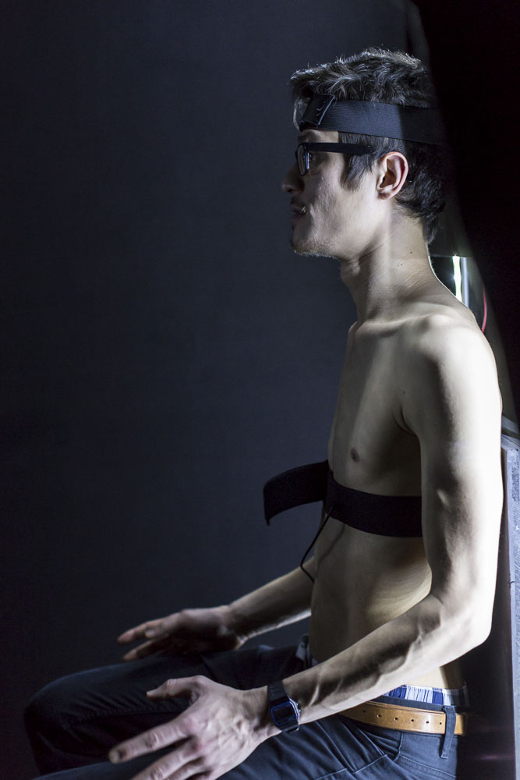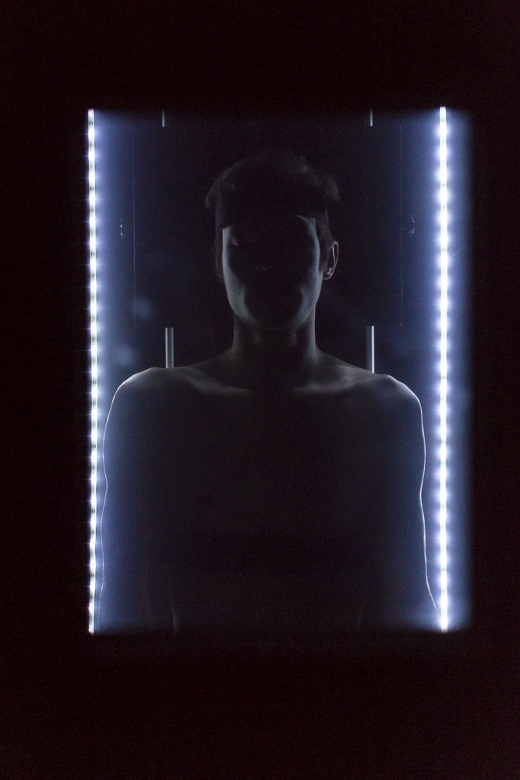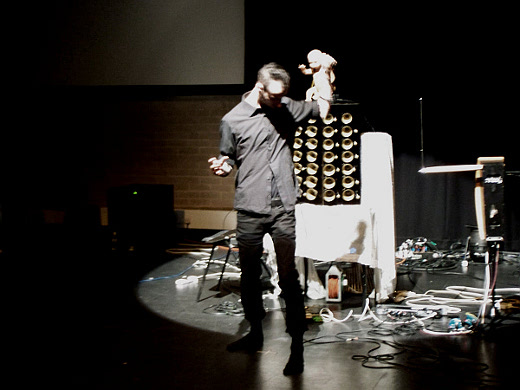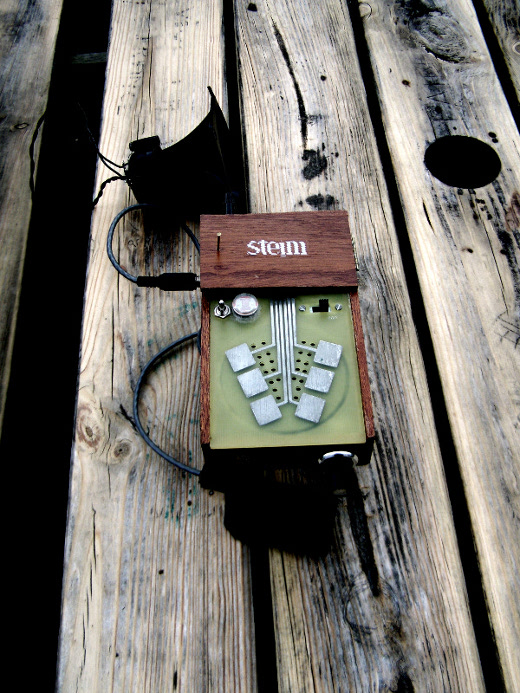Xth Sense > Event reports
Nigredo wins Cynetart Prize for Computer Based Art
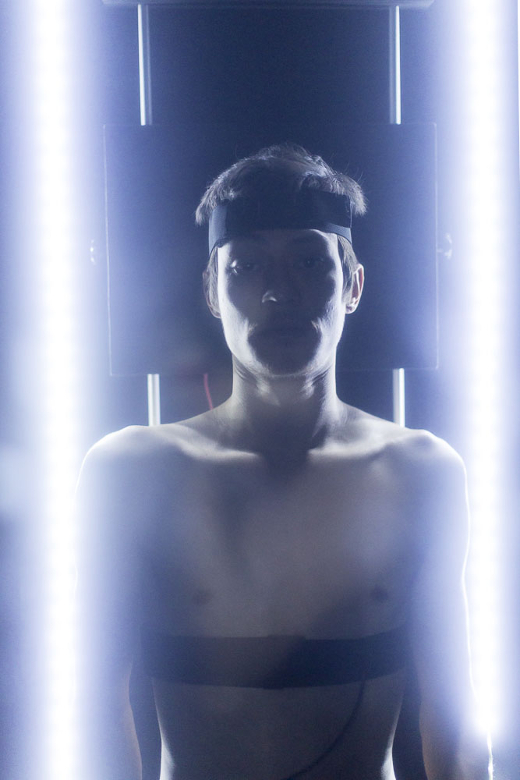
As the new year begins to unfold, I’m delighted to share the news that the private installation Nigredo (pictured above) I created with Marije Baalman at STEIM, has been recently awarded the Cynetart Prize for Computer Based Art, by Cynetart Festival in cooperation with HELLERAU (European Centre for the Arts). This is the second prize for Nigredo, following the award endowed by TransitioMX, the leading festival for New Media Art in Mexico, in 2013.
Nigredo is a 8-minutes private experience of altered self-perception and biophysical media, read more and watch a video here. Due to the nature of the work, it has always been quite difficult to document it, so I get this chance to share also some pictures of the work as installed in Dresden during the Cynetart festival. The pictures are all courtesy of David Pinzer. I want to thank the whole staff at Cynetart for the impressive support they provided in the realisation of the work.
The award jury included Deborah Hustić (media artist, blogger and curator based in Zagreb, Croatia), Neja Tomšič (artist, researcher and co-founder of MoTA – Museum of Transitory Art (Ljubljana, Slovenia), Alain Bieber (art critic, project manager for ARTE Creative, Strasbourg, France) and Andreas Ullrich (artist, curator based in Dresden, Germany). Their statements follow below.
Deborah Hustić
Marco Donnaruma’s work places human perception, body and behavioural senses in the first place making this way the intermedia arts and open source design truly a part of creative scientific exploratorium. Donnaruma’s work explores cutting edge bioacoustics and body & mind related topics in a wider scope of self-reflection with an obvious aim to put an individual in the centre of the media, in the centre of self-awareness, and in a way in the centre of technologically determined environment. But on the other hand it also shows the way open source design could be used for the above mention purposes by totally removing technological alienation in order to get us back to our bodies again by fearlessly delving into the unknown and unconscious darkness of sound and stimulation.
Alain Bieber
The installation « Nigredo » from Marco Donnarumma is a a deep travel into the dark unknowns of the subconscious mind, it offers an intimate, personal and intensive experience. The body of the visitor is wired to sensors, the own heart, muscles and vein tissues are producing a sound environment called « Bioacoustics », and the surprising installation leads to a performance where the fine lines of distinction between self and not-self are completly blurred. This artwork combines some things only the best artworks can do : It uses newest science and technology (biofeedback methods and wearable bioacoustic technology) to create this experience, it is still very emotional (and even physical), it touches and might change you, and for sure, it is a unforgettable experience.
Neja Tomšič
With Nigredo’s seemingly simple and minimalistic auditive, visual and physical set-up, Donnarumma creates a self-containing performance in which all the stimuli and events derive from the performer himself. It places the performance in the event of his self-perception being experientially altered. He metaphorically touches the remains, the waste (the nigredo)- as the materialisation of that which cannot be transformed in alchemic processes. What in the human existence are the remains, which can’t be transformed? The body, the self? This experience of becoming one with the world – losing the feeling of self, is achieved on a physical level, while the performative part is marked by the visitor’s own physical body. The question of the body and its spatial expression expands to theories of consciousness. In the performance we experience the contradiction of transcending our selves, while being conscious that this experience derives from our own bodies themselves.
STEIM Summer Party, the report
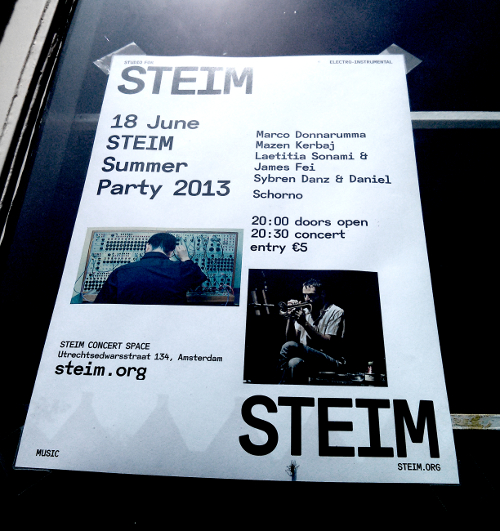
At STEIM!
It’s a surprisingly random hot day in Amsterdam. STEIM, the unique Studio for ElectroInstrumental Music, is invaded by sounds coming from all studios while the artists get ready for the big night. Chilled atmosphere, an indian dinner, and doors open! If you missed this Summer Party at STEIM, you missed a lot. Great music and awesome performers packed into one of the most important places for sound and music performance in the past 30 years up to these days .

Mazen Kerbaj solo
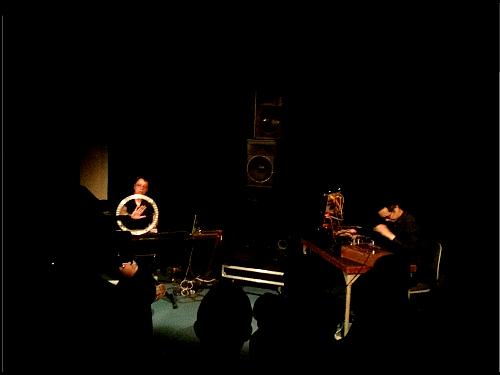
Laetitia Sonami & James Fei with custom instruments and a CrackleSynth
I was flattered when invited to perform a 30 minutes concert of biophysical music, including my latest piece Ominous, as I had the chance to share the stage with Laetitia Sonami & James Fei, Mazen Kerbaj, Sybren Danz, and Daniel Schorno. It was a great experience, a delicious auditive journey, and an emotional leap into the feel of being part of such community. So thanks everyone! The staff at STEIM, Esther, Jon, Marije, Kees, Nico, Lucas, and the audience that spread around STEIM and warmly welcomed us all.
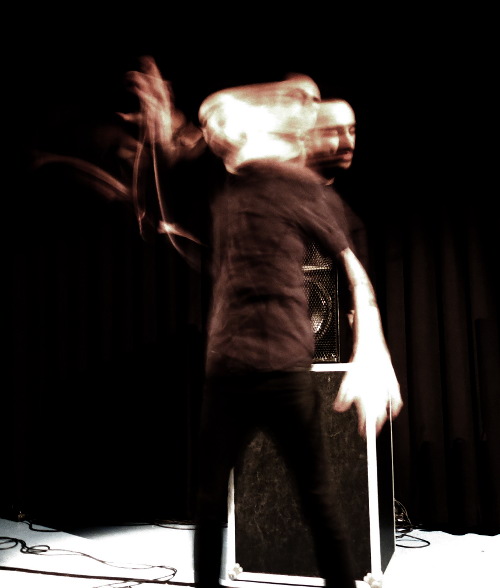
Yours truly performing Ominous. Pic by Marije Baalman
Xth Sense official public launch @ Music Hack Day Scotland
Here we are!
On a kind invite of Yann Seznec, today I am performing and launching officially the Xth Sense at the Scotland Music Hack Day,… rather thrilling!
Other live acts and presentations include Matthew Herbert, FOUND, Yann and Patrick Bergel.
Now the staff is setting up, and people start coming.
Check the schedule at the Hack Day homepage.
Body/Controlled, A night of BioInterfacing music in Berlin
Hi there!
It has been a while since my last post.
Things have been rather hectic; I’ve been caught up among travels, the Xth Sense public release (!), concerts and writing.
At the moment I’m finishing up my MScR final dissertation.
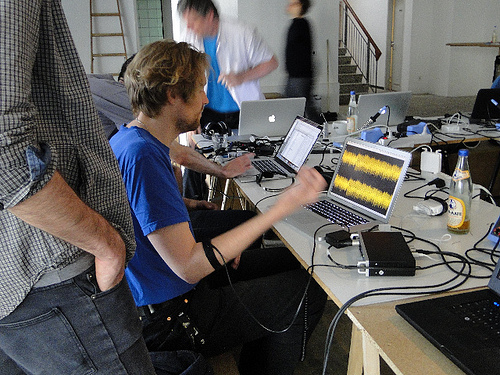
A student interfacing the Xth Sense with SuperCollider.
I’ll update the blog with some new features that have been added to the XS software, more news about the project going live, etc.
By now I thought to wet a bit your appetites with a brief audiovisual report from last amazing concert in Berlin at LEAP, Lab for Electronic Arts and Performance.
The event was organized by the LEAP staff, with guest curator Joao Pais, in collaboration with Create Digital Music and eContact! journal for electroacoustic music research (for which I curated a forthcoming issue on Biotechnological Music Performance).
I taught an XS workshop with a wonderfully enthusiastic class, and played a couple of pieces for the XS, along with Peter Kirn, using a Galvanic Skin Response (GSR) device, and Claudia Robles Angel, controlling videos and sounds with her brainwaves.
We also had the chance to attend a talk by colleague and friend Pedro Lopes. An informative and clear conversation on Human-Computer Interaction with a consistent focus on biotechnologies.
Quite an exciting week!
A set of pictures can be found on Flickr.
Below you can listen to the live recording of the three concerts.
Biophysical Music Talk at the KEAMS/SICMF Seoul International Computer Music Festival
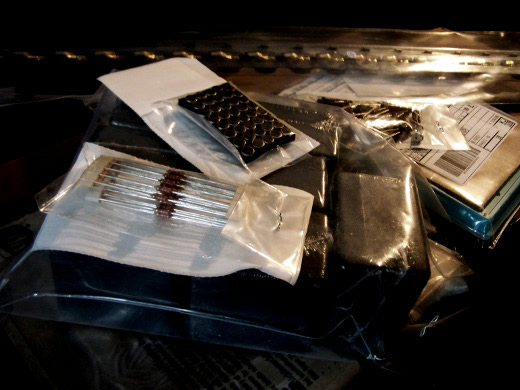
Preparing for the travel
From 20 to 24 October I visited Seoul in South Korea to present the Xth Sense and the new model of biophysical music to the Asian academic community within the frame of the SICMF/KEAMS (Seoul International Computer Music Festival and the Korean Electro-Acoustic Music Society). This engagement was endorsed by Creative Scotland, which awarded me a grant through their International Programme.
Besides, a related paper “Xth sense: a biophysical framework for the application of muscle sounds to interactive music performance” will be published in the Computer Music Journal Emile Vol. 9 soon in the upcoming month.
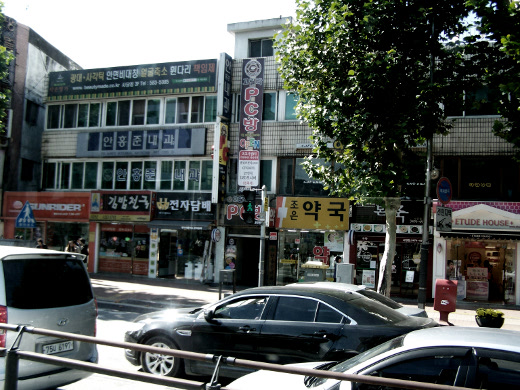
Welcome to Seoul
It was my first journey to an Asian country, although I have participated in other events in Japan, China and India via streaming interventions. Useless to say that the cultural impact was rather strong, the deep differences in society, customs and language are as fascinating as difficult to grasp.
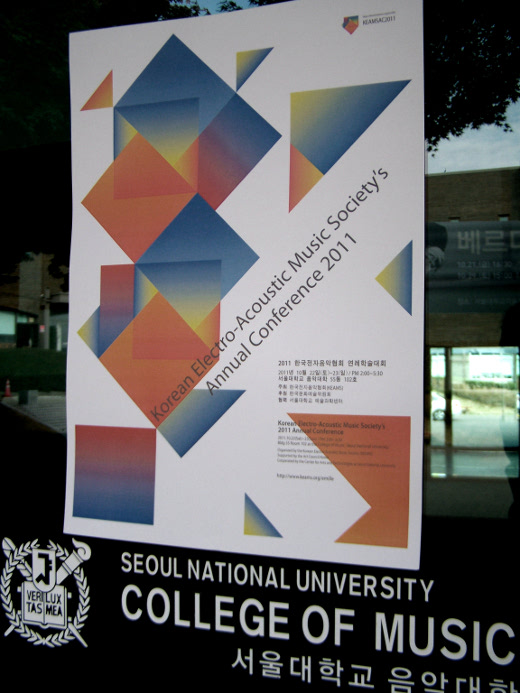
KEAMS poster at the Seoul National University
The event included night concerts hosted by the SICMF and paper presentations organized by KEAMS at the Seoul National University, College of Music. The conference was formerly introduced by Richard Dudas, an American composer which largely contributed to informing today’s computer music practice, and an exquisite person too.
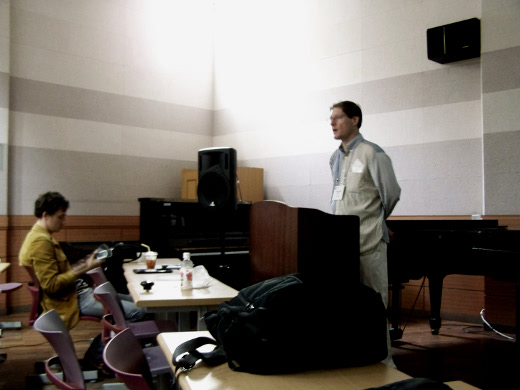
Richard Dudas opening speech
One of the first talks illustrated a site-specific installation project called Tertullia by Nicolas Varchausky. The project consisted of a multi-channel and open air system of loudspeakers located at the Mirogoj Cemetery, Zagreb, Croatia. The work approached “the space as an integrated geography, designing a path for the audience that formally resembled a radio (metaphorically transforming the space into both a receiver and a trasmitter), and creating a real time system for the sound composition.”
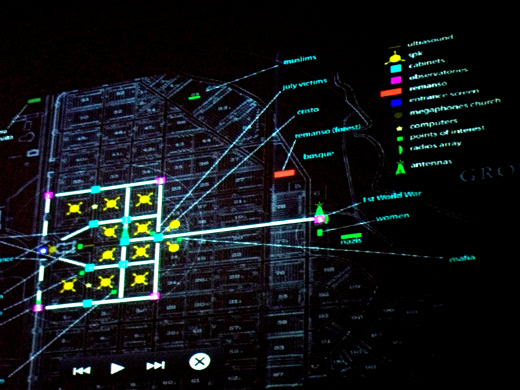
The Tertullia Project by Nicolas Varchausky et al.
The night concerts took place at the Jayu Theater, a majestic multi-purpose building provided with state-of-the-art halls and equipment. The organization was neat and succeded in making the night really enjoyable, by creating a cozy and friendly mood.
Although all pieces were executed by excellent performers, only the piece Black Crane for Geomungo positively impressed me, both sonically and structurally. Personally, I believe the other works were surely very good, but perhaps they lacked of that excellence and innovation touch that I always seek in a piece.
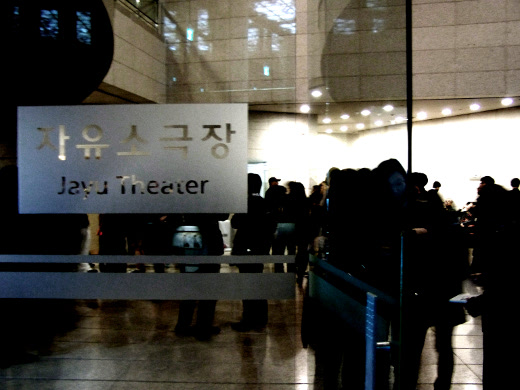
The Jayu Theater, Seoul
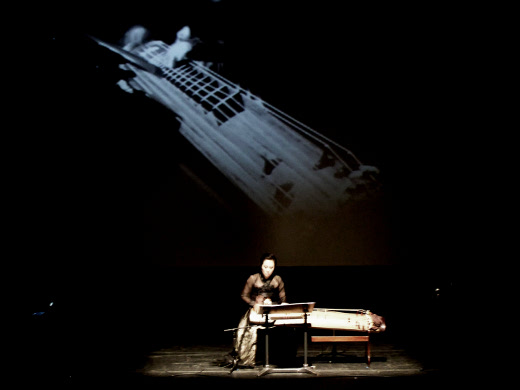
SICMF Concerts | Black Crane for Geomungo by Donoung Lee
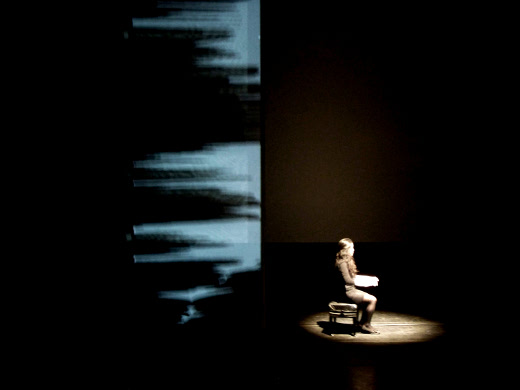
SICMF Concerts | Vpiano by Young Mee Lymn
The second day of the conference offered an exciting schedule. First off were Jieun Oh and Ge Wang from the CCRMA at Stanford University. They presented Converge, “a crowd-sourced audio-visual composition that brings together contextual autobiographical moments, captured and submitted by a group of participants, into a coherent narrative.”
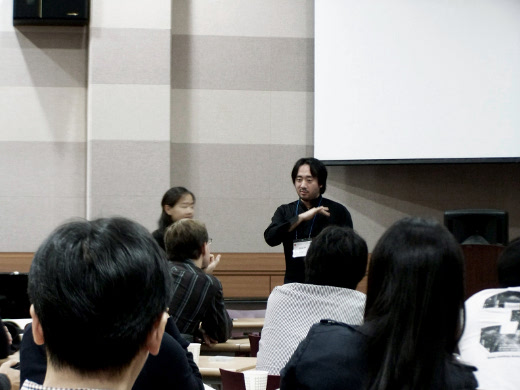
Converge by Jieun Oh and Ge Wang, CCRMA Stanford University
Next, we were delighted by a rather entertaining talk by Clarence Barlow, University of California Santa Barbara. His presentation focused on a detailed excursus through about 25 years of his personal experience with algorithmic composition… mindblowing.
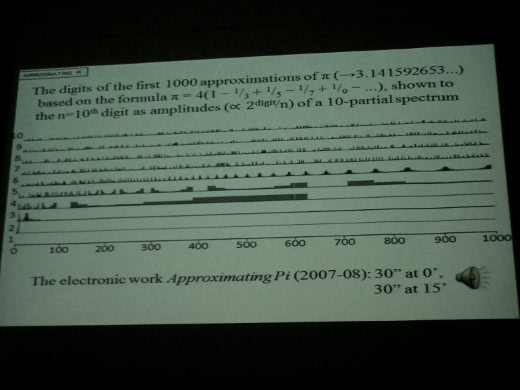
Algorithmic composition by Clarence Barlow, University of California Santa Barbara
Finally, I introduced the Xth Sense technology through an heterogeneous talk which outlined the conceptual and technical developments, along with some aesthetical considerations on the specific sonic forms that can be obtained with the XS biophysical system. I also had the time to perform a short demo.
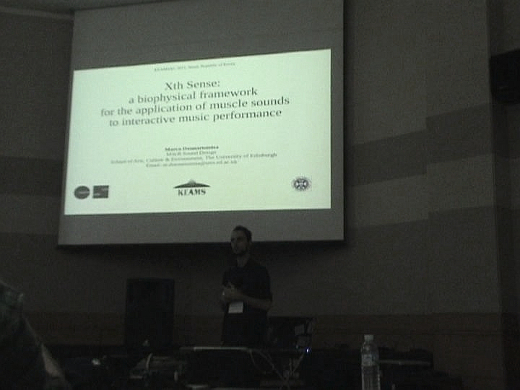
Xth Sense by Marco Donnarumma, SLE University of Edinburgh
Last but not least, Albert Chao from the University of Buffalo talked about his iMeasure custom headphones. From his website: “iM Headphones is embedded with a set of sonar sensors that take spatial readings of the physical environment and “play” particular sounds in relation to the data.”

iMeasure by Albert Chao, University of Buffalo
Unfortunately, I could stay in Seoul only few days, but the conference and the festival were well worth it. A special thanks goes to Richard Dudas and Ko Pyoung Ryang, who were capable of organizing a lovely and rich event, not to mention the amazing hospitality and the great and inspiring conversations we had. Hope to come back soon, perhaps to perform at SICMF 2012.
Here a little glimpse of Seoul (click to enlarge).
Xth Sense workshop @ nnnnn, London
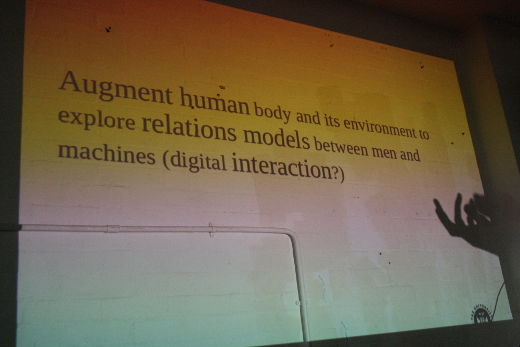
Xth Sense theoretical introduction
The third Xth Sense (XS) workshop took place at the nnnnn studios in London, shortly after the 4th Pure Data Convention.
nnnnn is the home of the relentless activities around FLOSS, sound art and obscure hacking organized by UK artist Ryan Jordan, also known for organizing the monthly and long-established Noise=Noise concerts.
When Ryan asked me to come over to make a workshop there was no doubt it would have been a fun week, it always is when I come down to London to visit friends. The course gathered a bunch of sound and media artists, alongside with few Openlab folks appearing randomly.
It all seemed quite successful, and although some participants did not have any experience at all with soldering and electronics, we moved quite rapidly through the course program.
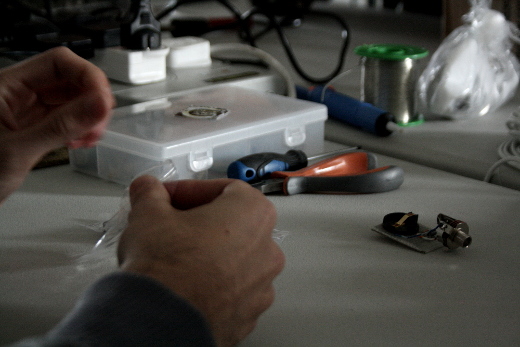
We kicked off by soldering the circuit
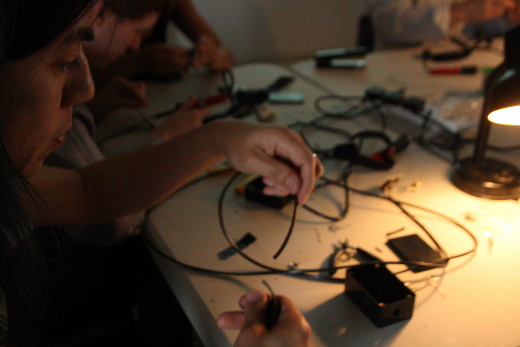
Then we refined the sensor and made it wearable
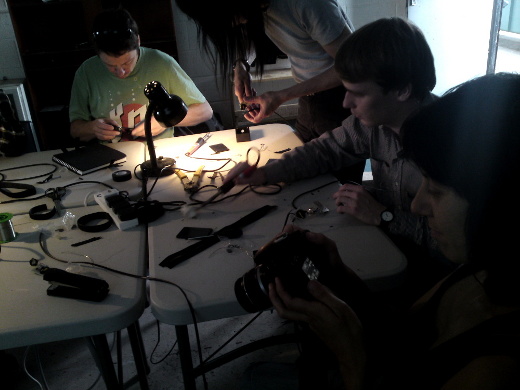
Eventually we successfully tested the biosensors
After building the XS sensors we started diving into the software framework and explored the design of sound-gestures so to become familiar with the system. It’s always pretty intuitive to get started with the XS, even though, especially for first-time users the complexity of the system may require the grasping of new concepts and techniques.
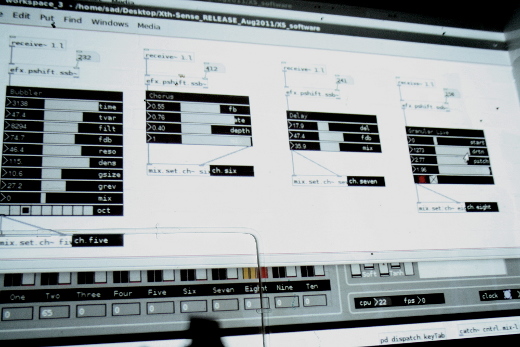
Editing a patch within the Xth Sense software
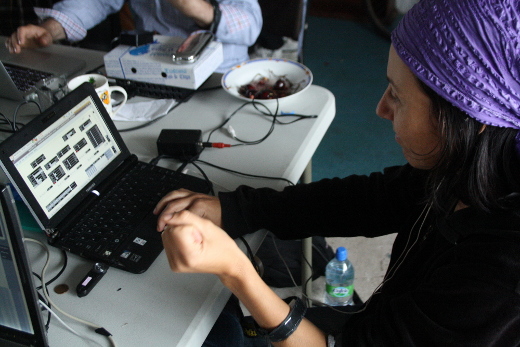
Designing the first sound-gestures
We closed the course with an open jam session during which everybody had the chance to test out the patches they created and the gestures and micro-choreography they have been working on during the week.
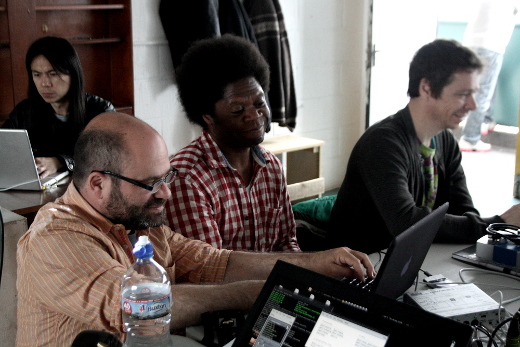
Testing the sounds definitions before the final jam session
Overall it was fun and exciting, as I also had the time and inspiration to develop the software a bit further; namely I just integrated MIDI Out support, so to send the features extracted from the biosignal to other Pd instances or external application software. I had the chance to see the students realizing with the XS some ideas that I never though to try out myself; the flexibility of the XS biophysical system seems to unveil something new every workshop I teach.
The 4th Pure Data Convention, Bauhaus Universitat, Weimar
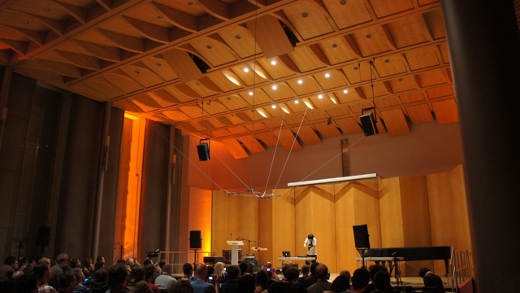
Chikashi Miyama | Black Vox
[The post has been UPDATED with a live recording of Music for Flesh II]
The Pure Data Convention is one of the best community led event I ever took part in. I’m not sure whether is the laid back attitude shared by the participants, or the excitement of showing and learning all the diverse things Pd can be used for, however the Pure Data meetings are something unique. The cloud of knowledge, techniques, good conversations and ideas that floats around the heads of the delegates is pretty special and cozy.
This year the fourth Pd Convention was organized by our friends and Pd developers Max Neupert and Bjorn Lindig, along with a team of colleagues from the Bauhaus Universitat in Weimar. I was honoured and thrilled to present the Xth Sense interactive system to the community, and eventually I had the chance to teach a workshop, give a lecture on the latest findings and perform the solo piece Music for Flesh II.
The workshop was quite fast, but we had the chance to get our hands dirty with some custom electronics and Pure Data programming for interactive, biophysical music; some pictures below.

The Xth Sense biophysical sensors
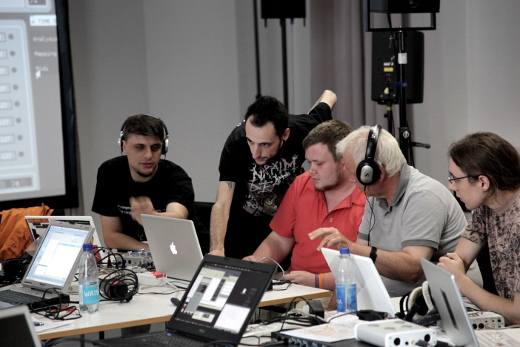
Designing sound gestures for the Xth Sense system
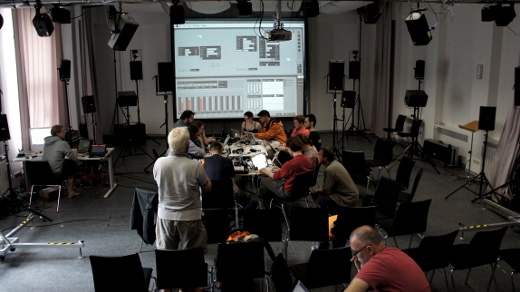
A ridiculous amount of speakers at the awesome Seam Studio.
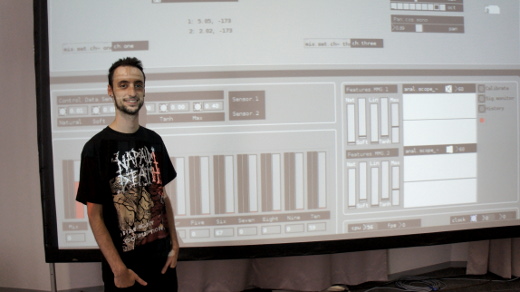
A nerd and its child.
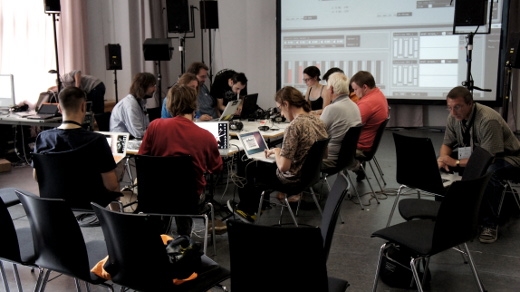
Full immersion, last hours of the course.
Personally it was a great experience as I collected some inspiring feedback and constructive critics about the whole XS project. Namely, I had wonderful conversations with friends Ricardo Palmieri and Richard Graham, that are both working on some highly recommended Pd-based projects. With Ricardo we have been considering a different standard for the production process of the XS sensors, while with Richard we discussed about the use of multiple subwoofers, the more effective impact of whole-body movements to both the sonic outcome and the audience perception, and the mediation between primal muscle sound and its computational mediation.
The latter topic is as tricky as stimulating; recently I’ve been thinking about this quite a lot, and if on one hand there is not an ultimate solution as we deal with the subjectivity of a musical aesthetic, on the other, this aspect of the research is crucial, for a deeper musical analysis could sharpen the timbrical characteristics of the XS as a musical instrument.
It is often very hard for me to be completely satisfied of a performance, but I can say the concert at the Seam Studio in Weimar was perhaps one of the best so far. Probably due to the swift anxiety of performing before the ears of my peers and colleagues, my concentration was fairly strong, and while playing I think I almost entered a trance. For the first time since March I spontaneously moved the whole body, rather than individual limbs; such a somatic behaviour triggered sound forms that I never heard before and playing the piece was far more enjoyable than usual. As simple as it gets, in contrast with single limbs contractions, whole body movements involve the excitation of a greater part of the body; thus many more oscillations are generated and the whole network of muscular tissues is excited. Sonically, this is translated in a faster dynamic and richer texture.
Here you can listen to a live recording of the piece.
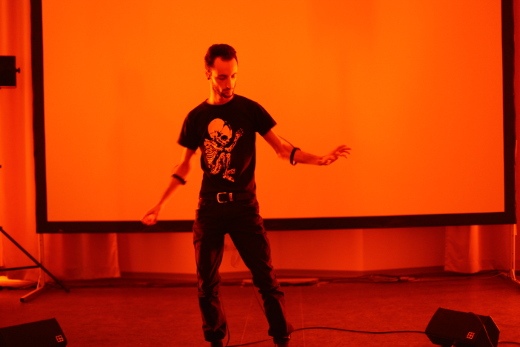
Marco Donnarumma | Music for Flesh II
The concerts program was excellent; the fourth PdCon gathered some of my favourite Pd musicians, such as Koray Tahiroğlu, Richard Graham, Chikashi Miyama (pictured at the top of the page), CHDH, Oscar Martin and Alexandre Porres. We also had an amazing exhibition, more workshops and a round table with a virtual Miller Puckette, who participated in streaming from the US. Check the program on-line to get a glimpse of the tight schedule.
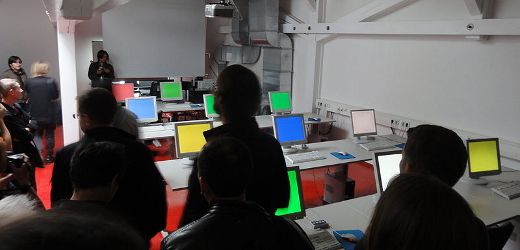
Giuliano Obici | Lanhouse Concert
Of course, I’m not forgetting about the papers; being that there were too many lectures, and the sessions were split in two rooms running at the same time I could not attend all of the presentations. However, it is hard to say which ones were the most interesting, because the diversity of the contents presented at the Convention is always so great to be almost overwhelming. If you wish to stay up to date with the latest developments of our community, you are only one click away.
A big thanks to the organization and to all the delegates that made this Convention another unforgettable one. A special thanks to Cyrille Henry, who provided us with some insights on the pmpd, a library for physical modelling and the use of shaders in GEM. Most likely I’ll be working with these tools soon for a new audiovisual performance.
All pictures are courtesy of the 4th PdCon.
Noise=Noise London – Tanaka, Donnarumma, Jordan, Koutsomichalis
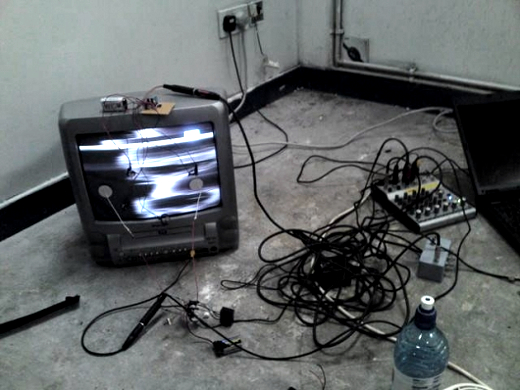
Ryan Jordan | Channelling Interferences
“Bio signal noise, music for flesh, psychosis attacks, the body is integrated”
http://nnnnn.org.uk/doku.php?id=noise_150811
Featuring performances by:
Atau Tanaka – “Concrete Corps is a musical concert performance for performer and bio-electrical interface as musical instrument. The instrument in question is the BioMuse, a sensor interface captures electromyogram (EMG) biosignals reflecting muscle tension. Biomedical electrodes make electrical contact with the skin, detecting electrical impulses of neurons as the brain commands voluntary muscle contraction.”
Marinos Koutsomichalis – “Sygxysis – a disturbance of psychological or mental health, psychological unrest, unrestful vexation) is a study in complexity using recursive stochastic noise generators. Sygxysis attacks the audience with intense spectra to enact situations of discomfort and psychological unrest, setting this way both body and consciousness into a constant state of alert and resulting in a profound awareness shift.
Ryan Jordan – “The audio static buzz and noise is momentarily hijacked as stray pirate radio frequencies are channelled and received through human flesh and bone.”
Marco Donnarumma – “Music for Flesh II is a seamless mediation between human biophysical potential and algorithmic composition. By enabling a computer to sense and interact with the muscular potential of human tissues, the work approaches the biological body as a means for computational artistry.”
Show info:
Monday August 15th
8-11pm
£5 suggested donation
rough bar
nnnnn Unit 73a, Regent Studios, 8 Andrew’s Road, E8 4QN
(get in the lift and go to the 7th floor, turn right and its the second unit)
Xth Sense @ ICMC, International Computer Music Conference, Huddersfield
I have been invited to the ICMC 2011 to give a lecture about the state of my current research in biophysical music. A related paper “Xth Sense: a study of muscle sounds for an experimental paradigm of musical performance” will be published in the ICMC proceedings.
“Since 1974 the International Computer Music Conference has been the major international forum for the presentation of the full range of outcomes from technical and musical research, both musical and theoretical, related to the use of computers in music… The theme of the 2011 conference is innovation : interaction : imagination emphasising the importance for our field of innovative technical developments, imaginative responses to new situations and, above all, the creative interaction of the technical and the musical.”
My participation to the ICMC in Huddersfield would have not been possible without a PRE travel grant awarded by The University of Edinburgh.
Music for Flesh II @ BEAM Festival, Uxbridge
“A high-tech music weekender, BEAM is a playground of homemade instruments and sonic robots, focused on electronic music being performed or created LIVE.”
The Beam Festival was an inspiring event; packed with an incredible line-up including Stelarc, Atau Tanaka and Adam Parkinson, Alex Nowitz, Dj Sniff, Ryan Jordan and many others, it offered 3 days of absolute sonic pleasure. Me and colleague Christos Michalakos were awarded a bursary for “outstanding work”, respectively for Music for Flesh II and Frrriction, thus we had the pleasure to perform at the Artaud building during the evening concert sessions.
A complete report of the event is available at my personal blog.
